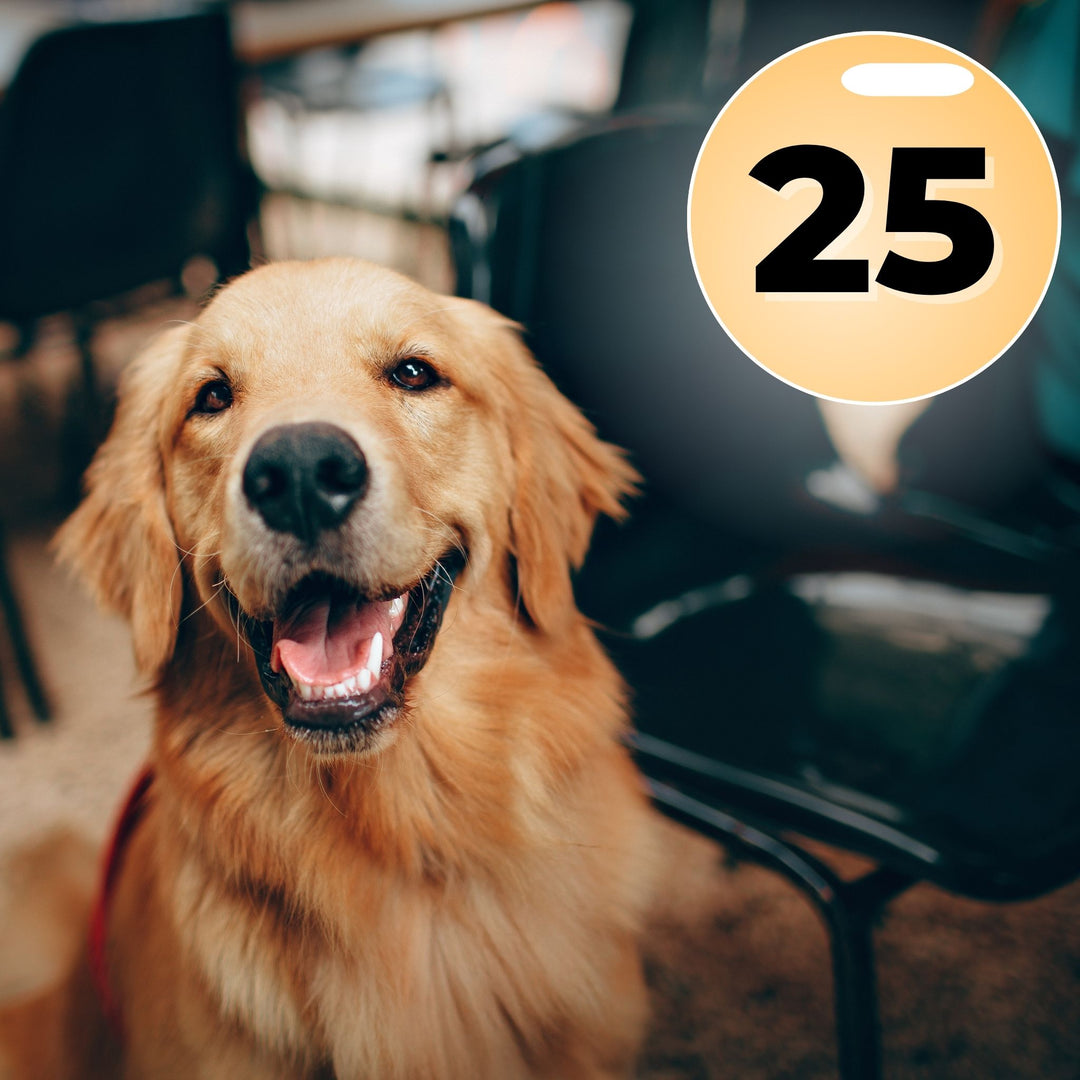Open Containers...What Is That All About?!

Perhaps you have listened to one of my podcasts or taken an online course or webinar, or even read an eBook where I mentioned having open containers in Scent Work training. You may think to yourself, “But Ms. Trainer Lady, containers are not open at trial…what on earth are you talking about?!”. Let’s find out!
IT IS ALL ABOUT TRAINING
Firstly, having open containers is a training approach I encourage clients to undertake in a variety of exercises, particularly if they are using food or paired odor hides. The emphasis on this statement is training.
But what is the purpose of doing this?
Well, there could be a variety of reasons:
My preferred training method involves having new dogs hunt for food in boxes when introducing them to the game of Scent Work. The whole purpose of this approach is for the dog to immediately self-reward upon finding the hide. This makes the concept super clear to the dog. After one or two repetitions, the dog will have a clear expectation of what the game is all about: I find the goodie, I eat the goodie.
Additionally, even at these incredibly early stages, we are promoting independence and problem-solving. Thus, if this very same dog is presented with a closed box, they will problem-solve their way to obtaining their goodie and self-reward. Translation: they will smash, rip, and destroy that box. Yup, all the things we never want a Scent Work dog to do, especially if we are interested in trialing down the road. Therefore, in the beginning when we are using food hides, the boxes are all fully open and easily accessible to the dog so that they may self-reward and not destroy the containers.
The same premise applies to paired hides, where we have a treat placed directly on top of an odor vessel that has a scented cotton swab within it (Birch, Anise, Clove, Cypress, etc.). Once again, the dog is still expecting to self-reward, thus the box MUST be open to allow them to do so. This approach promotes the dog being immediately rewarded upon finding the hide as they are sniffing the new target odor, thus helping them to make a positive association with this strange new smell. All good things.
When we are starting to work on only odor hides without any pairing at all, the boxes are STILL completely open. This is to promote the dog getting directly to source so they can be rewarded. Typically, dogs are still relatively early in their training at this stage, meaning their definition of what the sniffy game is all about may still be in flux. We want to make the picture as clear as possible. In Scent Work, we care about source: where the odor is coming FROM, not where it is GOING. Thus, at this stage we keep the boxes open to allow the dog to get right to the odor tin and then reward them heavily at the odor tin itself.
Once the dog is understanding this, we then slightly close the lids of the boxes over. This way the odor picture is different, but the dog can still easily get their nose into the container without promoting them to destroy it. Once they find it, if the lid has not already been completely opened by the dog, the handler will be prompted to do so and reward the dog at source. Seeing a trend here?
At this point, I will typically start to close over 1 or 2 odor boxes within a larger search are (where there may be 3, 4 or more total hides) and encourage the handler to reward quickly, again avoiding the dog trying to break into the box themselves, and then opening the box to reward further. Our goal is to help the dog understand what the premise of the game is, which is finding source.
From there, we will progress until the dog is demonstrating they fully understand the game. This means all the boxes are now completely closed. The handler will reward the dog at the seam of the box when the dog finds the hide and then fully open the box to reward at source. This approach will fade over time until the dog may be rewarded primarily at the seam of the box.
Here is the important part: immediately leading up to and immediately after a trial, I will once again have fully open containers or will open the odor container to feed the dog directly at source when they find the hide. Why? Training is all about reaffirming what the expectations are for the game and understanding that trialing may muddy that a bit. At trial, we are constantly rewarding the dog for an inaccessible hide (they are never able to get their nose right to source), and if you called a few false alerts over a series of classes or trials, the picture may become even fuzzier! Reaffirm that the correct answer is always source by using the open box technique before and after a trial.
Just remember that training and trialing are two completely different things. Trialing can absolutely negatively affect our training if we are not careful.
So, as you can see, there are lots of reasons why someone would have an open container either at the outset of their Scent Work training or when working a more experienced dog who is reaffirming the game is all about source.
DO TYPES OF CONTAINERS MATTER?
In short, yes.
By following the above approach for a variety of different containers (shoe boxes v. shipping boxes v. document boxes, purses, totes, lunch boxes, etc.), you will be able to see the changes in the dog’s ability to work out the problem. This change mainly relates to how much odor can escape a given container.
For instance, you may find that a fully open bag that you have stuffed with crumpled up newspapers is completely fine, but once that very same bag is empty, closed and lying flat on the ground with a odor vessel in it, the dog cannot work out the problem at all. It may be that no odor is escaping the bag for the dog to source.
This is when you want to play with WHERE you are putting your odor vessel itself within the container itself. For the bag example, perhaps having the odor vessel (likely a straw or something similar) near the seam of where the bag closes will be more fruitful than having it at the bottom of the bag.
If you have a smoke pen or something similar, experiment with that first. Place the smoke pen where you were planning to put the odor vessel and put the container down. Do you see any smoke seeping out? If not, that means nothing is escaping for the dog to source. What if you let it “age” or sit for 15-20 minutes, does that help? Ideally you are doing this before running any of your container searches as this allows odor to build up within the container itself. But if after that amount time there is still no visible smoke seeping out the seams or openings of the container, then you need to adjust things.
Thus by using open containers first, you can confirm the dog can positively sort out the problem and then incrementally make changes to get the container "closed" but still have it be productive for the dog.
FINAL THOUGHTS
Everyone should ask questions, be critical of their training and change course when need be. We should be thinking through why we are doing something and assessing if those approaches are working for us or not. We may need to modify or adjust an approach over time or from dog-to-dog or search-to-search.
Overall, I have found this approach of having open containers in training to be a successful one. Does that mean that people who have never opened containers when they are training are wrong? Of course not! There are lots of different ways to train dogs and Scent Work is no exception.
We just need to be mindful of what we choose to do with our own individual dogs, always striving to view our training plan in an open and honest way. This will allow us to quickly identify if we have gone off track and need to make a change to better reach our training goals.

Dianna has been training dogs professionally since 2011. She has done everything from teaching group training classes and private lessons, to specializing in working with fearful, reactive and aggressive dogs, to being a trial official and competition organization staff member.
Following a serious neck and back injury, Dianna was forced to retire from in-person dog training. But she was not ready to give up her passion! So, she created Pet Dog U and Scent Work University to provide outstanding online dog training to as many dog handlers, owners and trainers possible…regardless of where they live! Dianna is incredibly grateful to the amazingly talented group of instructors who have joined PDU and SWU and she looks forward to the continued growth of PDU and SWU and increased learning opportunities all of these online dog training platforms can provide.
In June 2021, Dianna and her business partner, Sean McMurray launched Cyber Scent Work, Inc., an organization that operates in the gray space between training and trialing in Scent Work. With Cyber Scent Work, Inc., handlers have the opportunity to earn Qs, titles and ribbons while also receiving helpful training advice regardless of whether they qualify or not! Be sure to check out Cyber Scent Work, Inc., you will be happy you did!
Join Our Newsletter
Stay up to date with all the happenings at Scent Work University, including the release of new online courses, seminars, webinars, eBooks and receive exclusive promotions and discounts!




